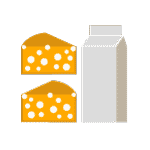RESULTS




You can calculate meal calories into per meal for a day. Select how many times in a day you take a meal. The result section will divide calories based on the selected option. For example, if you want to know how many calories you need to take 3 times per meal in a day, the calculator will divide calories into breakfast, lunch, and dinner. Calculate Meal Calorie







